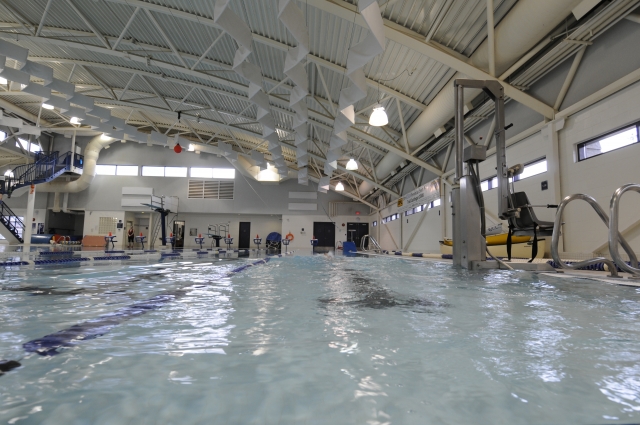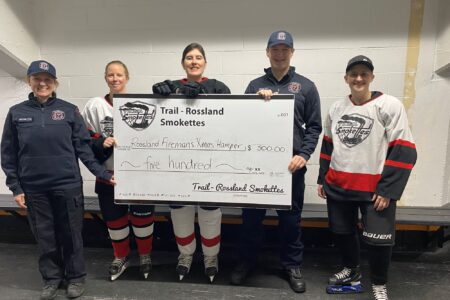Council confident in go-it-alone recreation approach - renews subsidy program
Recreation spending is an issue that’s usually audible in this region, even on paper. Specifically, it makes an ugly creaking sound, like the opening of a big ol’ can of worms. But the worms this week proved oddly non-responsive as council quietly considered an informal roundup of recent recreation expenditures provided by councillor Laurie Charlton and voted to continue a subsidy program to help eligible local groups access Trail facilities.
Council seems confident that Rossland’s go-it-alone recreation approach was the right decision following the 2008 breakdown of the regional recreation funding agreement and some epic and ultimately unsuccessful bargaining with Trail for the use of its facilities.
“I think we have some of the best recreation facilities and assets anywhere . . . I don’t think we’ve lost anything – period,” said Mayor Greg Granstrom emphatically.
The one thing we don’t have is an indoor pool like Trail’s large and lovely aquatic centre, where the differential rates in effect see Rosslanders charged double the fee for Trail residents and visitors from outside the two cities. In an attempt to balance this situation out, some local community groups were eligible for a fee subsidy in 2010.
That subsidy program will continue in 2011 – council voted Monday to set aside another $20,000 for it this year.
In 2010, just over $8,000 was allocated to the only three groups that applied: the Trail Local of the BC Special Olympics, the Greater Trail Swim Racing Society and Rossland Seniors Branch 45. The unused balance of the account rolls into the city’s surplus for the year.
The mayor objected to the Telegraph’s characterization of the fund as “under-subscribed” in 2010, and to any suggestion that the eligibility criteria may be overly rigid.
“It’s not a supply issue; it’s a demand issue,” said Granstom. “No one else has come forward.”
Minor hockey participants are exempt from the differential fees.
The city’s subsidy (of the additional portion of the fee only) is provided as a grant-in-aid, and available to “members and volunteers of non-profit groups and clubs whose purpose is recreation and competitive programs in another municipality of the Greater Trail area” with five or more Rossland members, according to the policy. The program cannot be one also offered by Rossland Recreation, and groups must have been established for more than two years and provide a service to children 18 and under, the physically or mentally challenged, or senior citizens over the age of 55.
“We’re trying to help out those who do use (the Aquatic Centre) without burdening the rest of the community,” said Granstrom.
There is no funding available for individuals, as the city has no legislative authority to transfer money to individuals outside the context of providing a “service” to the city. The program was also designed as a grant-in-aid to established societies, to avoid undermining the City of Trail’s right to set the rate structure as it sees fit for different “classes of persons”, i.e. Rossland residents.
There are other options, according to a briefing document prepared by city staff (It is available to the public in the council package for Jan 24 on the city website). Rossland Recreation could book blocks of time at the aquatic centre to offer programs, pay the differential fee and either pass along or subsidize the difference in the fees charged to participants. But then the city assumes the risks of low enrollment. A single governance structure would solve the situation. Or the city could hold a plebiscite on participation in an inter-municipal recreation service.
Not necessary, says the mayor, who indicated he has received congratulations from many community members for not signing an expensive recreation agreement with Trail.
“Rossland’s been put in a bit of an awkward position. We just couldn’t afford it.”
The city still paid a requisition to the regional district of approximately $125,000 in 2010, which includes funding for the Charles Bailey Theatre and meeting pre-existing debt obligations toward the Trail Memorial Centre (until 2012). It increased funding for the library last year by $17,000, still supports groups like the Kootenay Columbia Trails Society and the Rossland Council for Arts and Culture, and has taken on the maintenance of boulevards to the tune of $53,000 last year. It also leveraged a senior government grant of $488,000 in 2010 to repair the arena roof, the city portion being financed through reserves and internal borrowing to be repaid with interest over five years, beginning with $50,000 in 2010.
Charlton’s assessment puts the recreation cost-benefit difference at $914,000 for 2010, compared to approximately $629,000 in 2008, the last year of the regional recreation agreement.
Rossland’s municipal property tax revenue jumped from 2008 to 2009, with the city raising an additional $759,000, though figures from the city’s administrator suggest that an average homeowner (of a home assessed at $250,000) would have come out $8 ahead on the recreation front, due to a decrease in regional tax. Rossland’s overall municipal tax revenues stayed almost constant from 2009 to 2010, at about $3.517million.
The total assessed value of Rossland property fell by 4.73 per cent in 2010, a value supplied by the province, though the city must decide the applicable municipal taxation rates by May 15.
























